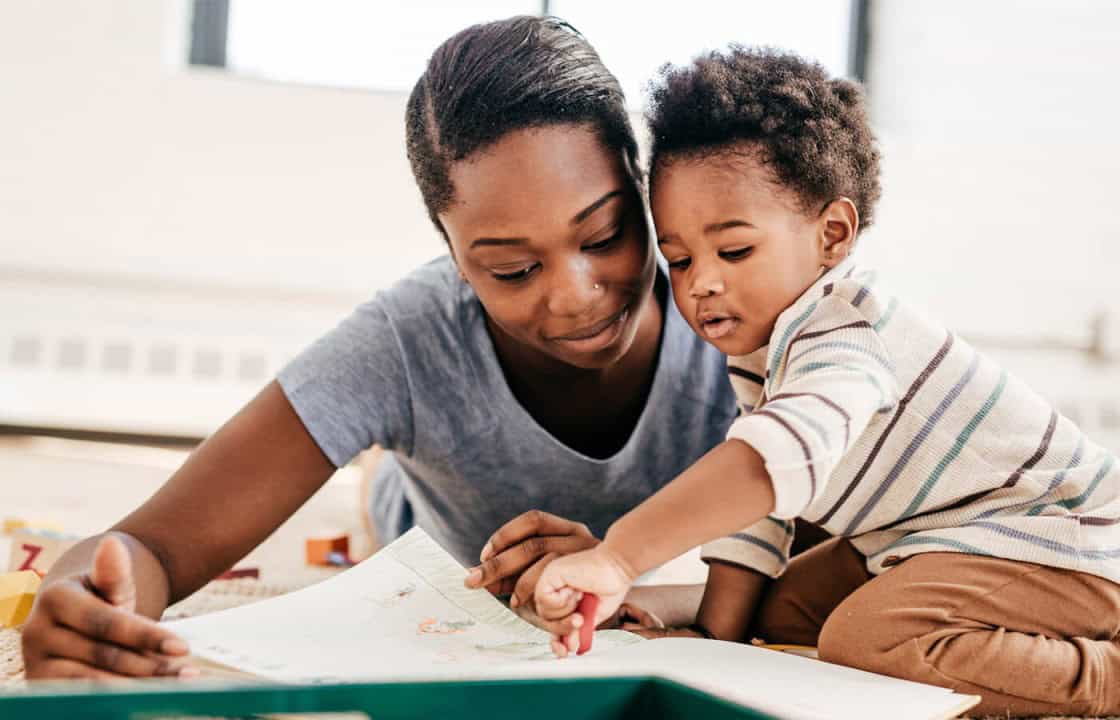|
|
By Jennifer Bailey, LCSW; LICSW-CP; RDT
Consider this exercise. Take a moment and think of someone you have a very close bond with. Perhaps it’s the person you want to call when you first hear good or bad news or who brings you peace. When that person walks into the room, it’s like a sigh of relief because “your person” has arrived.
Now that you have a person in mind, please take a moment and think about the specific things that person does that make you feel connected to them. Do they listen to you wholeheartedly? Do they make you laugh when you are feeling bad? That person, that relationship, has a specific component that is necessary in our relationship with our children: Attunement.
What is Attunement?
In March 2009, Dr. David Arredondo, a psychiatrist and neuropsychopharmacology consultant for adults, adolescents, children, and families serving the San Francisco metropolitan area, gave this definition for attunement from a talk he gave entitled “Attunement and Why it Matters.”
“Attunement refers to a deep, genuine, and significant connection with another human. The archetypical model is a mother/father with their infant. This relationship- one of the most remarkable found in all of nature- is the touchstone or gold standard to which attunement is compared,” said Arredondo. https://www.linkedin.com/in/davidarredondo/
Attunement can be interpersonal harmonization. It means understanding someone else, whether it’s how the person feels, thinks, or what they are going through.
When you understand someone, you can recognize and control your feelings, thoughts, and reactions while supporting them. The person you thought of when I asked you to think of someone you feel close to—yes, you are connected, attuned to that person.
Attunement is vital in relationships. It means understanding someone else’s feelings or thoughts and adjusting your actions to match. People sometimes confuse it with attachment, but they are different.
What is attachment?
Attachment describes a relationship and how people respond to each other. It can come from feelings like fear or stress or support and love. On the other hand, attunement means understanding someone deeply, including their words, actions, and emotions, even when they don’t say them out loud.
Attunement is how a relationship is built and stays strong. It takes ongoing learning, listening, and responding to each other. It’s a back-and-forth process. Attachment is the result of a relationship, but attunement is something you choose to do on purpose.
For example, two best friends who went to college now live in separate states. They keep in touch via phone calls and text messages. Even though they don’t spend much time together, when they can be in the same room, it’s as if they were next-door neighbors. That is attunement.
It is like being connected—like when you don’t talk to someone for a long time, but when you do, it feels like no time has passed. Understanding and responding to each other (attunement) usually leads to a strong and healthy bond (attachment).
What does effective attunement look like?
Let’s look at the parent-child relationship and how attunement, both good and bad, can affect it.
Imagine a parent and their baby at home together. The baby starts crying, showing that it is upset. The parent watches and listens, trying to understand what the baby needs. They decide the baby might be hungry and offer a bottle. The baby drinks and stops crying, feeling comforted.
Easy enough?
Let’s look closer because it’s deeper than the parent feeding the baby. In that situation, the parent manages their own emotions. The parent can understand that the child needs something and chooses a course of action to help soothe the child. Because of this, the child’s distress decreases, and the parent’s understanding of the child, knowing what the “I’m hungry” cry sounds like, increases.
This example is how a parent can effectively attune to their child. Let’s take a gander at what it would look like for the parent to attune to their child ineffectively.
What does ineffective attunement look like?
Let’s return to the same situation: A parent and baby are at home together. The baby starts crying, showing that it is upset. The parent listens and watches, just like before.
This time, instead of staying calm and trying to understand the baby’s needs, the parent becomes upset. Maybe they don’t know why the baby is crying, and out of frustration, they start yelling. Instead of helping, this reaction makes things worse. The baby keeps crying, and the parent becomes less able to understand or comfort their child.
Co-regulation and the role it plays with attunement
These two examples have similar components. In both situations, the parent notices the child’s distress. However, in the practical example of attunement, the parent stays calm and in control before responding to the upset child. This is called co-regulation.
This process involves guiding your child in learning to manage their thoughts, feelings, and behaviors by modeling it yourself. In other words, you need to check yourself before you wreck yourself.
When we regulate our emotions first, we can help and support our children better. By using what you know about your child, you develop a deeper understanding of them and intentionally choose your emotions, words, and actions to support their self-regulating ability.
A lack of co-regulation can make attunement difficult. If you don’t take a moment to assess your emotional state, you may end up mirroring your child’s distress, which can worsen things—just like in the example of ineffective attunement.
Why attunement and co-regulation are important
Why do we need to attune and co-regulate? What does it accomplish? Deepening your attunement with the practice of co-regulation with your child will positively impact your attachment (relationship) with them. It will allow clearer heads to prevail when faced with a conflict or problem, allowing for opportunities to resolve conflict and create solutions when you are with your child.
Your child will build upon their emotional regulation skills to effectively manage conflict with others, unexpected events, or other situational problems.
Why do we need to attune and co-regulate? What does it accomplish? When you co-regulate with your child, you build a stronger, more connected relationship. It helps create a sense of trust and understanding and will increase your success in navigating challenges together.
When conflicts arise, you can better stay calm and work through them. Over time, your child will learn to manage emotions, handle challenging situations, and interact healthily with others.
As your child strengthens their theory of mind (understanding how others think and feel), metacognition (thinking about their thinking), and self-regulation, they become better at solving problems, forming and maintaining relationships, and deepening their connection with you.
Takeaways
I know you just read through this whole article. Your brain may be throbbing right now. So here are the main takeaways to carry with you and incorporate when with your child:
- Attunement is the intentional learning and understanding of how another person functions.
- Attachment is the result or outcome of attunement.
- To effectively attune to your child (especially in times of distress), you must first regulate (manage) your emotions before you try to help your child regulate their emotions.
- To practice attunement, spend time with your kid and observe them (e.g., playing with Legos or running around outside when you are doing an activity together).
- Validate your child’s emotions.
Jennifer Bailey is a wife, mother of three, and therapist. She is a Licensed Clinical Social Worker (LCSW) and Registered Drama Therapist (RDT).








